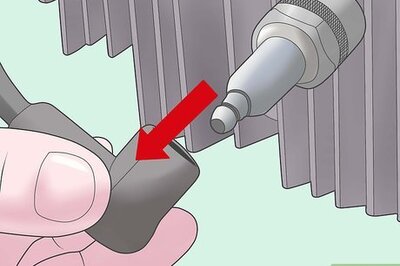
views
London: In a breakthrough, scientists have for the first time discovered a revolutionary technique to turn light into matter, a feat thought impossible when the idea was first theorised 80 years ago.
Three physicists at the Imperial College London's Blackett Physics Laboratory worked out a relatively simple way to physically prove a theory first devised by scientists Breit and Wheeler in 1934.
Breit and Wheeler suggested that it should be possible to turn light into matter by smashing together only two particles of light (photons), to create an electron and a positron - the simplest method of turning light into matter ever predicted.
The calculation was found to be theoretically sound but Breit and Wheeler said that they never expected anybody to physically demonstrate their prediction. It has never been observed in the laboratory and past experiments to test it have required the addition of massive high-energy particles, researchers said.
The new research, published in the journal Nature Photonics, shows for the first time how Breit and Wheeler's theory could be proven in practise. This 'photon-photon collider', which would convert light directly into matter using technology that is already available, would be a new type of high-energy experiment.
This physics experiment would recreate a process that was important in the first 100 seconds of the universe and that is also seen in gamma ray bursts. The scientists had been investigating unrelated problems in fusion energy when they realised what they were working on could be applied to the Breit-Wheeler theory.
Demonstrating the Breit-Wheeler theory would provide the final jigsaw piece of a physics puzzle which describes the simplest ways in which light and matter interact. "Despite all physicists accepting the theory to be true, when Breit and Wheeler first proposed the theory, they said that they never expected it be shown in the laboratory.
Today, nearly 80 years later, we prove them wrong," said Professor Steve Rose from the Department of Physics at Imperial. The collider experiment that the scientists have proposed involves two key steps. First, the scientists would use an extremely powerful high-intensity laser to speed up electrons to just below the speed of light.
They would then fire these electrons into a slab of gold to create a beam of photons a billion times more energetic than visible light. The next stage of the experiment involves a tiny gold can called a hohlraum (German for 'empty room'). Scientists would fire a high-energy laser at the inner surface of this gold can, to create a thermal radiation field, generating light similar to the light emitted by stars.
They would then direct the photon beam from the first stage of the experiment through the centre of the can, causing the photons from the two sources to collide and form electrons and positrons. It would then be possible to detect the formation of the electrons and positrons when they exited the can.




















Comments
0 comment